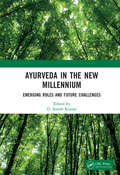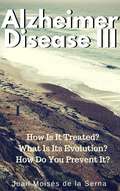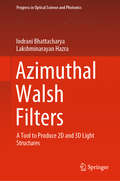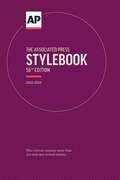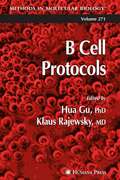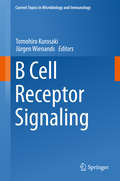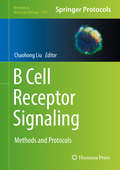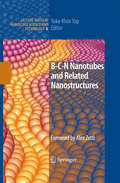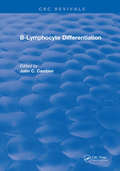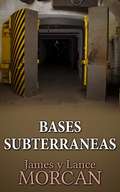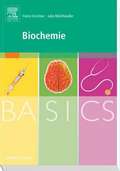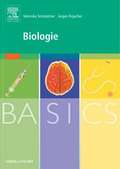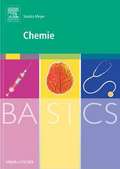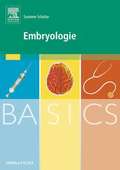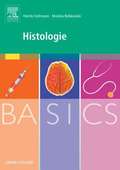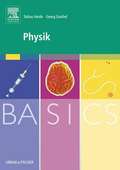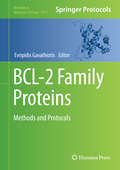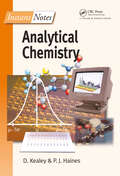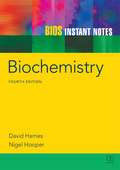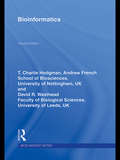- Table View
- List View
Ayurveda in The New Millennium: Emerging Roles and Future Challenges
by D. Suresh KumarAyurveda or "the sacred knowledge of longevity" has been practiced in India and many Asian countries since time immemorial. Interest in Ayurveda started growing all over the world in the late 1970s, following the Alma Ata Declaration adopted by the W.H.O. in 1978. Ayurveda in the New Millennium: Emerging Roles and Future Challenges attempts to survey the progress made in this field and to formulate a course of action to take Ayurveda through the new millennium. It also identifies the many stumbling blocks that need to be removed if Ayurveda is to cater to the needs of a wider audience. Features: Newer insights into the history of Ayurveda Regulatory aspects of the manufacture of ayurvedic medicines Industrial production of traditional ayurvedic medicines Quality control The scientific rationale of single herb therapy Biological effects of ayurvedic formulations Optimization of ancient wisdom and newer knowledge Conservation of threatened herbs Nutraceuticals and cosmeceuticals from Ayurveda Critical view of Ayurveda in the West Direction for the Ayurveda renaissance Ayurveda in the New Millennium: Emerging Roles and Future Challenges describes the strength of Ayurveda and how to usher in the Ayurveda renaissance. This book will be of interest to proponents of Ayurveda and all branches of traditional and alternative medicine. Experts from the fields of medicine, pharmacology, new drug discovery and food technology will also find it useful.
Ayurvedic Pharmacopoeial Plant Drugs: Expanded Therapeutics
by C. P. Khare"This kind of systematic work is exactly what is needed for people to help bridge traditional Ayurvedic practice with modern science." Venkatraman Ramakrishnan, Nobel laureate, current president of the Royal Society and group leader at the Medical Research Council Laboratory of Molecular Biology, Cambridge Biomedical Campus, UKAyurvedic Pharmacopoe
Azheimer Disease III How is it treated? What is its evolution? How do you prevent it?
by Juan Moises de la Serna Jeannette AntezanaAlzheimer’s has spread, no one can stop it. To the family it has come, it’s thinking about staying. There are pieces of advice to follow, of those who know well The specialist says it; it’s for your own good Little by little, the cruel disease progresses Put it back as you can, they can help you today --- LOVE ---
Azimuthal Walsh Filters: A Tool to Produce 2D and 3D Light Structures (Progress in Optical Science and Photonics #10)
by Indrani Bhattacharya Lakshminarayan HazraThis book explores the possibility of using azimuthal Walsh filters as an effective tool for manipulating far-field diffraction characteristics near the focal plane of rotationally symmetric imaging systems. It discusses the generation and synthesis of azimuthal Walsh filters, and explores the inherent self-similarity presented in various orders of these filters, classifying them into self-similar groups and sub-groups. Further, it demonstrates that azimuthal Walsh filters possess a unique rotational self-similarity exhibited among adjacent orders. Serving as an atlas of diffraction phenomena with pupil functions represented by azimuthal Walsh filters of different orders, this book describes how orthogonality and self-similarity of these filters could be harnessed to sculpture 2D and 3D light distributions near the focus.
AΡ The Associated Press Stylebook
by Associated PressThe spiral-bound Associated Press Stylebook, 56th Edition, includes more than 300 new or revised entries. Specialized chapters cover sports, business, punctuation, data journalism, health and science, news values, polls and surveys, and digital security for journalists. New this year is a chapter on inclusive storytelling, while the chapters on religion and social media are revised. The AP Stylebook is widely used as a writing and editing reference in newsrooms, classrooms and corporate offices worldwide.
B Cell Protocols (Methods in Molecular Biology #271)
by Klaus Rajewsky Hua GuA diverse collection of protocols ranging from the latest inventions and applications to some classic, but still frequently used, methods for studying B-lymphocyte development and function in higher animals. These readily reproducible protocols follow the successful Methods in Molecular BiologyTM series format, each one offering step-by-step laboratory instructions, an introduction outlining the principle behind the technique, lists of equipment and reagents, and tips on troubleshooting and avoiding known pitfalls.
B Cell Receptor Signaling (Current Topics in Microbiology and Immunology #393)
by Tomohiro Kurosaki Jürgen WienandsThisvolume details our current understanding of the architecture and signalingcapabilities of the B cell antigen receptor (BCR) in health and disease. Thefirst chapters review new insights into the assembly of BCR components andtheir organization on the cell surface. Subsequent contributions focus on themolecular interactions that connect the BCR with major intracellular signalingpathways such as Ca2+ mobilization, membrane phospholipidmetabolism, nuclear translocation of NF-kB orthe activation of Bruton's Tyrosine Kinase and MAP kinases. These elementsorchestrate cytoplasmic and nuclear responses as well as cytoskeleton dynamicsfor antigen internalization. Furthermore, a key mechanism of how B cellsremember their cognate antigen is discussed in detail. Altogether, the discoveriespresented provide a better understanding of B cell biology and help to explainsome B cell-mediated pathogenicities, like autoimmune phenomena or theformation of B cell tumors, while also paving the way for eventually combating thesediseases.
B Cell Receptor Signaling: Methods and Protocols (Methods in Molecular Biology #1707)
by Chaohong LiuThis volume looks the current advanced protocols used to study aspects of the B cell receptor (BCR). The chapters in this book cover topics such as the mutant of BCR repertoire to understand antibody evolution; interactions between B cells and viruses; mechanical force during BCR activation; B cell signaling using flow cytometry; confocal microscopy, total internal reflection microscopy and intravital two-photon microscopy; and the methods used to study critical cell components related with B cell activation. Written in the highly successful Methods in Molecular Biology series format, chapters include introductions to their respective topics, lists of the necessary materials and reagents, step-by-step, readily reproducible laboratory protocols, and tips on troubleshooting and avoiding known pitfalls. Cutting-edge and practical, B Cell Receptor Signaling: Methods and Protocols is a valuable resource for everyone in the scientific community currently working in the B cell field.
B-C-N Nanotubes and Related Nanostructures (Lecture Notes in Nanoscale Science and Technology #6)
by Yoke Khin YapCarbon nanotubes (CNTs) and Boron nitride nanotubes (BNNTs) are part of the so-called B-C-N material system, which includes novel nanostructures of carbon (C), doped-carbon, boron (B), boron nitride (BN), carbon nitride (CNx), boron-carbon nitride (BxCyNz), and boron carbide (BxCy). BNNTs and CNTs are structurally similar and share extraordinary mechanical properties, but they differ in chemical, biological, optical, and electrical properties. Therefore, hybrid nanotubes constructed of B, C, N elements are expected to form a new class of nanotubes with tunable properties between those of CNTs and BNNTs. In addition, these B-C-N nanostructures will further enhance and complement the applications of CNTs and BNNTs. With contributions from leading experts, B-C-N Nanotubes and Related Nanostructures is the first book to cover all theoretical and experimental aspects of this emerging material system, and meets the need for a comprehensive summary of the tremendous advances in research on B-C-N materials in recent years.
B-Lymphocyte Differentiation
by John C. CambierThis book discusses the mechanisms of transmembrane signal transduction during B-Cell Activation, the Regulation of Gene Expression during B-Cell Differentiation, Anti-immunoglobulin antibody induction of B-Lymphocyte activation and differentiation in vivo and in vitro, Helper signals in B-Lymphocyte differentiation, Growth and differentiation of b-cell clones in vitro, B-Cell tumors as models of lymphocyte differentiation, and Memory b-cell activation, differentiation, and isotype switching.
BASES SUBTERRANEAS
by Adriana Rojas James Morcan Lance Morcan¿Alguna vez te has preguntado lo que yace bajo nuestros pies? ¿Qué obtienen las superpotencias del mundo levantar sus bunkers secretos subterráneos? BASES SUBTERRANEAS detalles de confirmadas y rumoradas instalaciones subterráneas en Estados Unidos y alrededor del mundo. Conteniendo rara evidencia fotográfica a través de, así como poco conocidas frases de figuras clave gubernamentales, hace un caso competente para que haya un enorme mundo escondido majo la superficie de la Tierra. Los marroquís especulaban que la encubierta infraestructura subterránea puede ser por mucho la más grande que cualquier antes pudo haber supuesto y es posiblemente usada para el desarrollo de tecnologías suprimidas. Sus fuentes incluyen archivos desclasificados, reportes universitarios, documentos de WikiLeaks y entrevistas con personal exmilitar convertidos en soplones que aclaman haber trabajado en “ciudades bajo el suelo”. Bases Subterráneas da una amplia gama de hechos y teorías que ultimadamente permite a los lectores formar sus propias conclusiones. La exposición cubre todo desde: las áreas de evacuación verificadas del Departamento de Defensa de los Estados Unidos bajo la Casa Blanca y el Pentágono, así como sus sitios reconocidos en Mount Weather y Cheyenne Mountain; instalaciones subterráneas en todo el mundo, incluyendo el extenso complejo Mezhgorye de Rusia y la Pine Gap de Australia, administrada por la CIA; los titulares de los periódicos que se habían olvidado hace mucho tiempo y que decían que Adolf Hitler y los altos oficiales de las SS podrían haber construido una colonia nazi bajo la Antártida después de la Segunda Guerra Mundial; los rumores de que las empresas conjuntas entre humanos y extraterrestres están ocurriendo bajo la tierra y que los ciudadanos secuestrados están siendo detenidos en prisiones subterráneas para la experimentación médica ilegal, como la clonación. ¿Por qué la Elite Glob
BASICS Biochemie, German Edition
by Hanni Kirchner Julia MühlhäußerSpeziell für Medizinstudenten gemacht: der perfekte Überblick über die gesamte Biochemie</b<! Von A wie Aminosäuren bis Z wie Zellstoffwechsel. <P><P> <ul> <li>Gut: kompakter Überblick über die Biochemie</li> <li>Besser: mit vielen Klinikkästen und Versuchsbeschreibungen</li> <li>Basics: jedes Thema in kleinen Häppchen auf je einer Doppelseite. Schön in Farbe, prima zu lesen und mit vielen Versteh-Bildern im typischen "Basics"-Stil</li> </ul> <P><P>Das Beste: geschrieben von einem starken Team –Studenten und erfahrenen Ärzten – die wirklich Bescheid wissen. So wird Biochemie verständlich, ohne zu sehr ins Detail zu gehen. Ideal zum Einarbeiten ins Thema! Das bieten Ihnen die BASICS: <ul> <li>das Wesentliche zum Thema in leicht verständlicher Form</li> <li>schnell fit für Praktika, Famulaturen und bed-side-teaching-Kurse</li> <li>fächerübergreifendes Wissen - ideal zum Lernen nach der neuen AO</li> </ul>
BASICS Biologie, German Edition
by Veronika Sonnleitner Jürgen RojacherVerloren im Dickicht der Überinformation? Schluss mit dem Stress: Mit der BASICS-Reihe gewinnen Sie den Überblick! <P><P> <ul> <li>Gut: umfassender Einblick in die medizinisch-relevanten Teilgebiete des Fachs Biologie – von der Zellbiologie und Genetik über die Mikrobiologie bis zur Ökologie.</li> <li>Besser: mit vielen Klinikkästen, Praktikumsteil und Glossar</li> <li>BASICS: jedes Thema in kleinen Häppchen. Schön in Farbe, prima zu lesen und mit vielen Versteh-Bildern im typischen ""BASICS""-Stil</li> </ul> <P><P>BASICS: <ul> <li>Das Wesentliche zum Thema in leicht verständlicher Form</li> <li>Schnell fit für Praktika und den 1. Abschnitt der Ärztlichen Prüfung</li> <li>Ideal zum Lernen nach der aktuellen AO</li> </ul>
BASICS Chemie, German Edition
by Sandra MeyerVerloren im Dickicht der Überinformation? Schluss mit dem Stress: Mit der BASICS-Reihe gewinnen Sie den Überblick! <P><P> <ul> <li>das Wesentliche zum Thema in leicht verständlicher Form</li> <li>schnell fit für Praktika und den 1. Abschnitt der Ärztlichen Prüfung</li> <li>Ideal zum Lernen nach dem aktuellen GK</li> </ul> <P><P>Geschrieben von einem starken Team –Studenten und erfahrenen Ärzten – die wirklich Bescheid wissen. Das Grundlagenwissen der Chemie schaffbar für Studenten zusammengefasst: am GK orientiert und mit vielen klinischen Bezügen.
BASICS Embryologie, German Edition
by Susanne SchulzeWer sich mit der Embryologie befasst, berührt unweigerlich den Bereich des Wunderbaren – denn wenn aus zwei unsichtbaren Zellen innerhalb von wenigen Monaten ein vollständiger Organismus heranreift, bleibt dies schier unbegreiflich. Wer das „Wunder des Lebens" ansatzweise begreifen will, hat mit „Basics Embryologie" genau den richtigen Begleiter zur Hand. <P><P>Es bietet Ihnen die ganze Embryologie im Überblick, anschaulich und verständlich: Von der Entstehung der Keimzellen über die Embryonal- und Fetalentwicklung mit der Herausbildung der einzelnen Organe und Organsysteme bis zur Geburt eines neuen Menschen. Oft unterschätzt, vermittelt dieses Fachgebiet jedoch wichtige Grundlagen für das gesamte weitere Studium. <P><P>Die BASICS sind perfekt geeignet, um sich in ein Thema einzuarbeiten und einen Eindruck von dessen gesamter Bandbreite zu gewinnen. Das Doppelseiten-Prinzip ermöglicht einen schnellen Überblick über die Thematik und ist so super geeignet für die Pause zwischen zwei Vorlesungen oder eine S-Bahn-Fahrt. Das moderne Layout und die zahlreichen vierfarbigen Abbildungen garantieren Lesespaß. <P><P>Die BASICS werden von jungen Ärzten geschrieben, die genau wissen, worauf es im Studium ankommt. <P><P>Das erwartet Sie in „BASICS Embryologie": <ul> <li>Alle wichtigen Fakten kompakt und verständlich</li> <li>Verknüpfung von Theorie und Klinikpraxis anhand von Fallbeispielen</li> <li>Optimales Lernen in kleinen Häppchen durch thematische Doppelseiten</li> <li>Übersichtliche Darstellung mit vielen Bildern für ein noch besseres Verstehen</li> <li>Zusammenfassende Tabellen für schnelles Nachschlagen</li> </ul>
BASICS Histologie, German Edition
by Henrik Holtmann Monika BobkowskiVerloren im Dickicht der Überinformation? Schluss mit dem Stress: Mit der BASICS-Reihe gewinnen Sie den Überblick! <P><P> <ul> <li>Gut von den Grundlagen der Histologie bis zur Histomorphologie, Funktion und Klinik der Organsysteme</li> <li>Besser Mit klinischen Fallbeispielen.</li> <li>Basics: jedes Thema in kleinen Häppchen auf je einer Doppelseite. Schön in Farbe, prima zu lesen und mit vielen Versteh-Bildern im typischen ""Basics""-Stil</li> </ul> <P><P>BASICS: <ul> <li>das Wesentliche zum Thema in leicht verständlicher Form</li> <li>schnell fit für Praktika und den ersten Abschnitt der Ärztlichen Prüfung</li> <li>fächerübergreifendes Wissen - ideal zum Lernen nach der neuen AO</li> </ul>
BASICS Physik, German Edition
by Tobias Heide Georg StachelDer umfassende Einblick in die medizinisch-relevanten Teilgebiete des Fachs Physik– von Mechanik und Elektrizitätslehre über Optik bis zur radioaktiven Strahlung. <P><P> <ul> <li>Gut: kompakter Überblick über die Physik</li> <li>Besser: mit Klinikkästen, Beispielaufgaben und Glossar</li> <li>Basics: jedes Thema in kleinen Häppchen auf je einer Doppelseite. Schön in Farbe, prima zu lesen und mit vielen Versteh-Bildern im typischen ""Basics""-Stil</li> </ul> <P><P>Das Beste: geschrieben von einem starken Team –Studenten und erfahrenen Ärzten – die wirklich Bescheid wissen. So wird Physik verständlich, ohne zu sehr ins Detail zu gehen. Ideal zum Einarbeiten ins Thema! Das bieten Ihnen die BASICS: <P><P><ul> <li>das Wesentliche zum Thema in leicht verständlicher Form</li> <li>schnell fit für Praktika, Famulaturen und bed-side-teaching-Kurse</li> <li>fächerübergreifendes Wissen - ideal zum Lernen nach der neuen AO</li> </ul>
BBC Wildlife Documentaries in the Age of Attenborough (Palgrave Studies in Science and Popular Culture)
by Jean-Baptiste GouyonThis book explores the history of wildlife television in post-war Britain. It revolves around the role of David Attenborough, whose career as a broadcaster and natural history filmmaker has shaped British wildlife television. The book discusses aspects of Attenborough’s professional biography and also explores elements of the institutional history of the BBC—from the early 1960s, when it was at its most powerful, to the 2000s, when its future is uncertain. It focuses primarily on the wildlife ‘making-of’ documentary genre, which is used to trace how television progressively became a participant in the production of knowledge about nature. With the inclusion of analysis of television programmes, first-hand accounts, BBC archival material and, most notably, interviews with David Attenborough, this volume follows the development of the professional culture of wildlife broadcasting as it has been portrayed in public. It will be of interest to wildlife television amateurs, historians of British television and students in science communication.
BCL-2 Family Proteins: Methods and Protocols (Methods in Molecular Biology #1877)
by Evripidis GavathiotisThis volume explores numerous techniques for the genetic, molecular, biochemical, and structural examination of BCL-2 family proteins and their interactions. The chapters in this book cover topics such as the relevance of BCL-2 proteins in health and disease; evaluating cellular dependencies to specific BCL-2 family proteins; flow-cytometry-based methods for measuring BCL-2 proteins and mitochondrial-based cell death; measuring activity and interactions of BCL-2 family proteins in the presence of mitochondria, artificial membranes or yeast; conformational activation and oligomerization of pro-apoptotic proteins BAX and BAK leading to cytochrome c release and apoptosis; structural and biophysical studies in solution and lipid vesicles using nuclear magnetic resonance, cryo-electron microscopy, fluorescence microscopy and electron paramagnetic resonance. Written in the highly successful Methods in Molecular Biology series format, chapters include introductions to their respective topics, lists of the necessary materials and reagents, step-by-step, readily reproducible laboratory protocols, and tips on troubleshooting and avoiding known pitfalls.Cutting-edge and thorough, BCL-2 Family Proteins: Methods and Protocols is a valuable resource to inspire and encourage novice and established scientists to further their research and make new discoveries in this exciting field.
BIGFOOT What's the Evidence? (Fountas & Pinnell LLI Gold #Level O)
by James BryantBigfoot: What's the Evidence? Author: James Bryant
BIO 160 Laboratory Manual: Introduction to Human Anatomy and Physiology
by Chris SullivanLaboratory manual for exercises in basic life sciences and anatomy.
BIOS Instant Notes in Analytical Chemistry (Instant Notes)
by David Kealey P J HainesInstant Notes in Analytical Chemistry provides students with a thorough comprehension of analytical chemistry and its applications. It supports the learning of principles and practice of analytical procedures and also covers the analytical techniques commonly used in laboratories today.
BIOS Instant Notes in Biochemistry (Instant Notes)
by David Hames Nigel HooperBIOS Instant Notes in Biochemistry, Fourth Edition, is the perfect text for undergraduates looking for a concise introduction to the subject, or a study guide to use before examinations. Each topic begins with a summary of essential facts-an ideal revision checklist-followed by a description of the subject that focuses on core information, with cle
BIOS Instant Notes in Bioinformatics (Instant Notes)
by Charlie Hodgman Andrew French David WestheadThe second edition of Instant Notes in Bioinformatics introduced the readers to the themes and terminology of bioinformatics. It is divided into three parts: the first being an introduction to bioinformatics in biology; the second covering the physical, mathematical, statistical and computational basis of bioinformatics, using biological examples wherever possible; the third describing applications, giving specific detail and including data standards. The applications covered are sequence analysis and annotation, transcriptomics, proteomics, metabolite study, supramolecular organization, systems biology and the integration of-omic data, physiology, image analysis, and text analysis.
